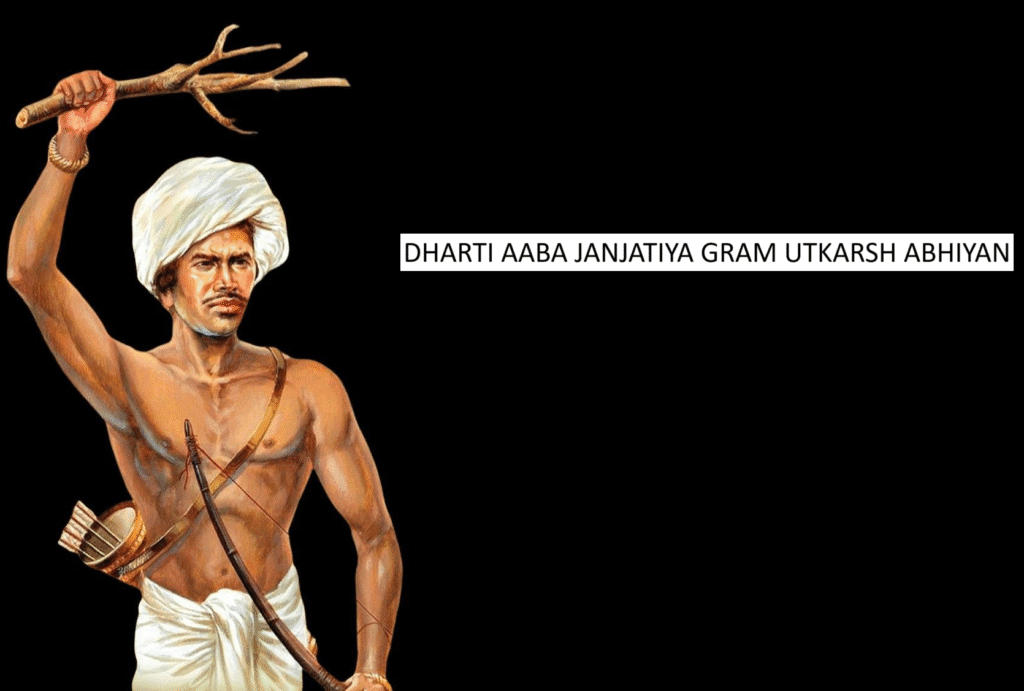Dharti Aaba Janjatiya Gram Utkarsh Abhiyan (DAJGUA), is Government of India flagship program devoted to all-encompassing development and benefit saturation in tribal areas. Deep within India’s culturally rich and varied geography is a grassroots movement known as the “silent revolution,” which aims to empower and uplift tribal groups. In addition to being a government initiative, the Dharti Aaba Janjatiya Gram Utkarsh Abhiyan (DAGJUA) represents respect, acknowledgment, and a new beginning for India’s Adivasi communities. There will be a statewide Awareness & Benefit Saturation Campaign from June 15 to June 30, 2025, including 63,000+ tribal-dominated communities in 549 districts, including 29,000+ Particularly Vulnerable Tribal Group (PVTG) habitations in 207 districts.

Table of Contents
Dharti Aaba Janjatiya Gram Utkarsh Abhiyan (DAJGUA): Objectives
- Educate people on their rights, benefits, and important government programs.
- Assure that you receive all documentation and perks at the doorstep.
- Encourage grassroots mobilization to advance participatory governance.
- Encourage young people from tribal communities to become digital warriors and civic activists.
- Screen, educate, and guide people with SCD at the village and household levels.
Dharti Aaba Janjatiya Gram Utkarsh Abhiyan (DAGJUA): Vision and Mission
This tribal welfare scheme is framed with a mission statement “Bringing Government Benefits to Every Tribal Doorstep”. This initiative is to leave no tribal household behind by November 15, 2025, Janjatiya Gaurav Diwas, with the goal of reaching 100% awareness and benefit saturation.
Dharti Aaba Janjatiya Gram Utkarsh Abhiyan (DAGJUA): Core Principles
The scheme has the following as its core principles:
- Janbhagidari: Maximise public involvement
- Whole of Government Approach
- Local level Impact: Reaching the last mile
Dharti Aaba Janjatiya Gram Utkarsh Abhiyan: Guidelines
To view the detailed guidelines of the scheme please click here:
Dharti Aaba Janjatiya Gram Utkarsh Abhiyan: SoP
Please click ‘Download’ to view/download the SoP of the scheme:
In terms of tribal development and governance, Dharti Aaba Janjatiya Gram Utkarsh Abhiyan (DAGJUA) represents a new perspective that prioritizes autonomy over dependability and active involvement over paternalism. This scheme is significant because it is a unique instance of grassroot planning grounded in tribal rights, culture, and dignity in an era of top-down policy.
Dharti Aaba Janjatiya Gram Utkarsh Abhiyan (DAGJUA) may prove to be a model that may be replicated for tribal development throughout India, particularly in states such as Madhya Pradesh, Chhattisgarh, Jharkhand and Odisha as it continues to implement this concept. The campaign aims to restore agency to India’s indigenous peoples in keeping with Birsa Munda’s enduring legacy, which goes beyond building or programs.
Local leadership is fostered at the grassroots level through this effort. Elders, young people, and women in particular are urged to assume leadership positions in the formulation and implementation of developmental objectives. Individuals now have direct authority over decision-making thanks to the resuscitation of Gram Sabha institutions, many of which had deteriorated over time. At the local level, this boosts accountability and fosters confidence.
What is the full form of DAGJUA?
The acronym for Dharti Aaba Janjatiya Gram Utkarsh Abhiyan is DAGJUA. This scheme is introduced i n order to encourage inclusive, environment- friendly, and community-led development in tribal villages.
Why is the scheme called ‘Dharti Aaba’?
Birsa Munda, affectionately referred to the tribal groups as “Dharti Aaba” (Father of the Earth), is the inspiration behind the campaign’s name. He was a social reformer and warrior for tribal liberation who supported dignity, land ownership, and tribal rights.
When will be the DAGJUA campaign held?
The Dharti Aaba Janjatiya Gram Utkarsh Abhiyan campaign is scheduled to be held from 15 June, 2025 to 30 June, 2025.
What are the activities to be included in this awareness campaign?
Among the activities are:
Local Gram Sabha gatherings, street plays in local tribal language, or nukkad nataks, Posters and wall paintings exhibitions, Awareness walk/processions and events, Pamphlet distribution, Audiovisual film screenings about education, land, forests, and tribal rights.
You may also read:
Follow us :

